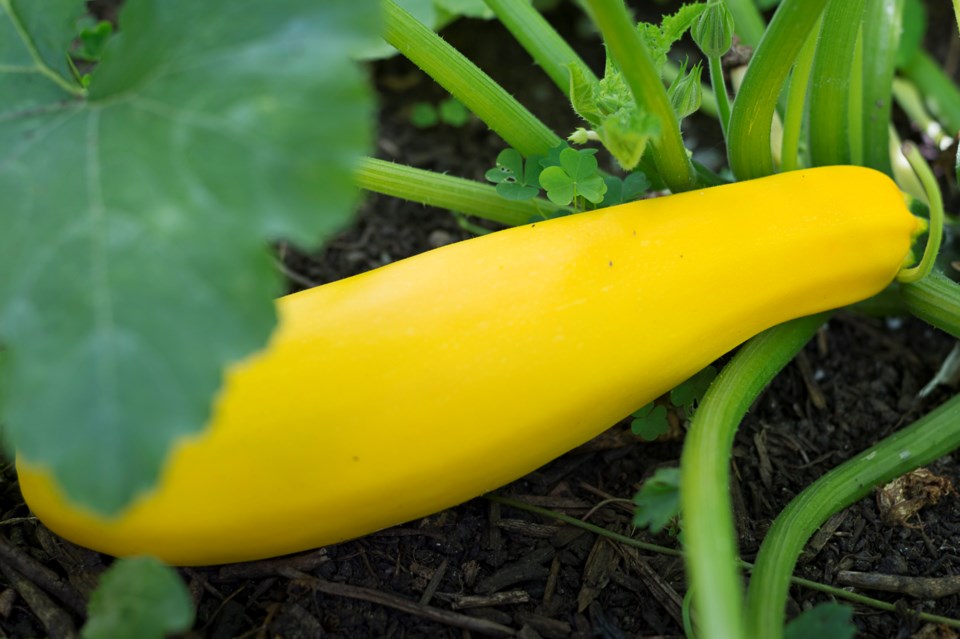Q: “My kids and I started a vegetable garden this year and we are growing zucchinis. Our problem is that most of the fruit has gone yellow/black and squishy at the ends. I have read this is a calcium problem. But how can I fix it? Also, we planted celery. When does it mature? The stalks are tallish but very small in circumference.”
Michelle MacRae,
Port Coquitlam
A: Yes, your zucchinis likely have a calcium problem. Adding dolomite lime or bonemeal will raise the calcium content on your soil but it may not work fast enough to give you a zucchini harvest in a few weeks. But it’s best to do it now anyway in hopes we have a long fall of good growing weather.
I’d suggest that this fall you decide where you’ll plant zucchini next year and be sure to add some lime or bonemeal to that spot. Both will benefit other areas too. You could do a soil test to find out if other amendments are needed. Garden centres have soil tests — but make sure you get a test that evaluates trace elements as well as the major ones.
Eggshells also contain calcium. I’ve been adding crushed eggshells to the veggie garden for years. The crushed ones take a while to break down. Ground eggshells work faster. Grinding is more doable (and causes less trouble with spouses) if you grind eggshells in an old blender or coffee grinder that’s used for nothing else.
The time from celery seed sowing to maturity is usually 100 days, though the West Coast Seeds variety “Tango” is said to take only 85 days. It can be used at any stage in its life cycle.
Your stalks are small because celery needs a very rich soil and loads upon loads of water. That’s why it’s not an easy crop to grow. It’s known as a crop for “muck” soil. Manure benefits celery because it holds in moisture and is rich in nutrients.
Another problem with celery is that the stalks are dry and very stringy. Our long, hot summer droughts sure don’t help celery gardeners.
Q: “I decided to remove a wisteria plant a few years ago. I cut off the main stalk and removed most of the main root and some of the longer pieces but could not dig it all out. Now I get wisteria popping up in three or four different places. So far I control it by either pulling out the suckers or killing the leaves with vinegar or Roundup. How can I get rid of it?”
Frances,
Cloverdale
A: Sad to say, Frances, you’re already doing the very best you can do in this situation. But if you’d left the wisteria growing, you’d still have had a problem with suckers. Wisteria is programmed to become a huge vine. It needs a lot of pruning and this stimulates the roots to produce suckers — and, as you’ve discovered, the roots spread far and wide. So keep digging, pulling or killing the suckers because the roots can’t keep producing suckers for ever. They’ll exhaust their food stores and ultimately the suckers will be fewer and smaller and then vanish.
Anne Marrison is happy to answer garden questions. Send them to her via [email protected].



